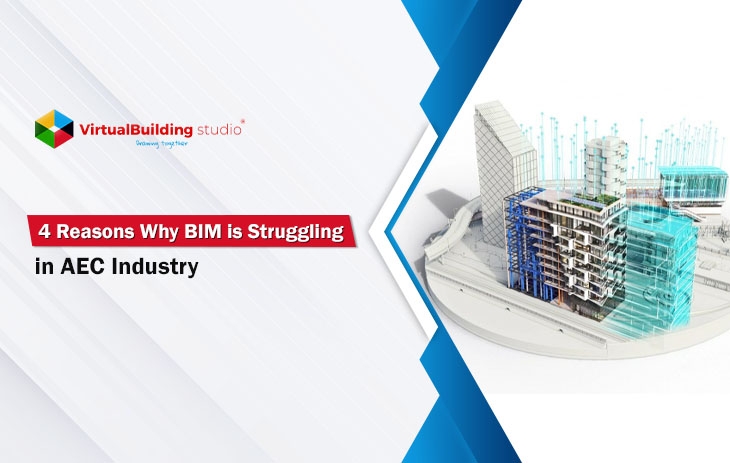
The development of new BIM methods and the development of new business strategies for the existing CADD users is important for a successful future and participation in the AECO industry (Architecture, Engineering, Construction, and Operation). But, protesting the anti-BIM mentality is also important. It is the key to realize that BIM is a reformation, not a CADD evolution.
BIM operations tend to far more than just effective use of a software tool. This method needs people to leave their comfort zones and actively commit to learning, growing and communicating.
While the team’s performance relies on each member doing their role at the proper time, it is still possible to practice. It may take a while but you get there, eventually.
Experts must spend more time to use tools with such an experimental approach oriented on the BIM method. Achieving a ‘ BIM commitment ‘ is only feasible if there is an engagement to interaction, effective management and coordination.
Let’s discuss the problem of this opposition to change and then, we shall discuss what it is like, actually achieving this transformation.
Hiring more Staff
There are many procedures in CAD that we can now recognize as unproductive. One of these procedures is the mentality of ‘ adding more staff to finish the job’, which is a managerial failure, not a development.

Adding more staff to a ‘cold ‘ team, with the new staff considering the BIM method, the project is bound to create severe disputes in the future parts of the projects. For most situations, these disputes will be followed by great quantities of extra time spent in correcting unforeseen mistakes.
For instance, modeling can be a very hypnotic job; those teams make the mistake of relying on modeling and losing focus on the real objective: quantitative measurements, performance, and price.
These issues can be avoided by establishing strict procedures. Ultimately, the aim of BIM and its wider implementation in IPD (Integrated Project Delivery), can be regarded as a method that enables for more effectiveness and better project delivery, with less request for information of plans, etc.
Intelligence and Reinvention
How Does a Company Continue to Develop Its Procedures Into BIM Effectively?
The very first thing is to talk about the things that work as well as the things that don’t. The readiness to innovate, at the organizational stage, is essential for changing and accepting new methods of creating, monitoring and delivering projects.
Secondly, it is important to develop processes and directions that would make the team operate the firm’s initiatives and overall goals. The transformation can happen in numerous ways such as, enabling present procedures to develop, the development of impulse response tables, graphic styles, and all the other fields that are impacted.
For example, ‘pursuing CAD is a prevalent error. Investing attempts to recreate CAD outcomes in BIM is truly a pointless exercise. This has never created any amount of profit for any business but it has led to many losses for several projects and businesses, following the links on the tags with full assurance.
It is essential to identify what initiatives should be focused on, and it is equally essential to do so during the correct period.
It is more suitable to allow the evolution of symbols in BIM, particularly when labels and other annotations can be combined with particular components that give the project better quality information with less need for clarification compared to CAD. BIM can narrate a better tale than CAD because we’re drawing in CAD but we’re building in BIM.
It is Not Appropriate to Do This in BIM
When someone says that you can’t do something in a BIM app but it is relevant to the design work, there can be only two possible reasons: they don’t understand how to do it, or they’re just pretending.

Of course, all that can be undertaken in CAD can be performed in BIM and in a significantly better way. Companies may have to work with new methods in BIM but this is what will allow our industry to grow and generate better projects. Most constraints are dictated by the lack of experience of BIM users, not by the software alternatives.
Overcoming CAD Addiction
The CAD may continue to thrive in several sectors but, it will be substituted by BIM in the AEC sector, and this has already occurred in many nations.
For some individuals, CAD is their comfort zone and they adhere to current procedures, resulting in many transitional issues. Some even create situations to assure BIM’s failure; A this way you can reuse CAD. But, if the processes are followed correctly, BIM would function very well. It might be easy to hide this kind of sabotage if there is an environment of resistance to change.
In BIM, you must begin well and organize, schedule and validate to work efficiently. While execution can happen progressively, it is necessary to radically tackle the damaging anti-BIM mentality.
This means that people who are in charge of the BIM effort must be instrumental in creating the guidelines: “We will create a progressive shift but we must all comprehend and acknowledge from the outset that BIM is the ultimate compulsory objective.” To ensure this dedication and discipline, it is important that the panel is integrated.
The Board makes the distinction through this engagement. This discipline makes you the BIM champion and you become the exemplary in the AECO the sector. Drawing isn’t BIM, Modeling isn’t BIM; BIM is about construction as a whole.




